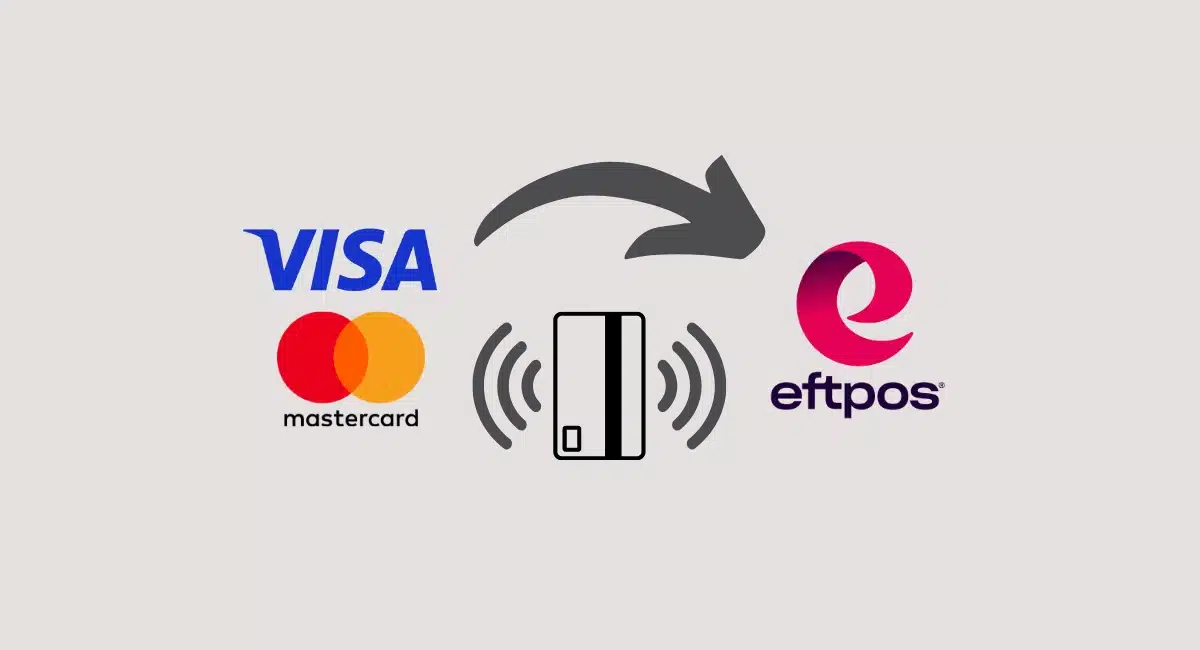Every cent counts when you own a business, and finding ways to cut costs and increase profitability will never stop being a priority. One often-overlooked aspect of this lies in the payment processor used to accept card payments in the first place.
Behind all card payments, there’s a relatively complex set of fees that can eat into a merchant’s bottom line. Some types of cards, like international credit cards, usually cost more than others.
To combat this, there’s a slightly under-utilised method that can do wonders in reducing payment costs on dual-network cards: least-cost routing payments, a.k.a. merchant-choice routing.
What is a least-cost routing payment?
Least-cost routing (LCR) payments are debit card transactions automatically routed through the lowest-cost card network (usually eftpos) to reduce card processing costs for the merchant.
The system only works with contactless transactions where a dual-network/co-branded card is used. Mobile wallet transactions are expected to become compatible in Australia by the end of 2024. Though the industry is currently working on making LCR available for online transactions, no launch date is agreed for this yet.
Dual-network cards in Australia are either co-branded Visa and eftpos or Mastercard and eftpos. Typically, the international schemes Visa and Mastercard cost the merchant more in payment processing than the domestic debit card network eftpos.
Yet, contactless card transactions tend to default to the more expensive Mastercard/Visa network without LCR in place. To save money, many merchants therefore choose to set up least-cost routing through their payment company.
How do least-cost routing payments work?
Whenever customers pay with a card like Visa or Mastercard, the transaction will typically involve a few different intermediaries, all looking for their own piece of the action. You might’ve heard these fees referred to as interchange fees, and they generally vary a lot depending on the card processing “route” opted for.
With least-cost routing, your payment service provider evaluates all the available card networks and automatically selects which one is most economical for any given tap-and-go transaction. This is usually decided by a few different factors like the interchange fees, network fees or even the transaction volume.
If, on the other hand, a customer inserts their dual-network debit card in the EFTPOS machine, the terminal will display the option to select either the eftpos network (CHQ or SAV buttons), Debit Mastercard/Visa Debit or CR (stands for ‘credit’, although it is a debit transaction). Regardless of what the cardholder chooses, the same transaction total is processed from the person’s account, but the merchant’s card processing fee depends on the choice.
Least-cost routing does not work with any credit cards. The system is exclusively for domestic dual-network debit cards where eftpos is one the card schemes.
The benefits of least-cost routing payments
Let’s take a look at some of the pros you can expect with least-cost routing:
1. Reduced processing costs
LCR enables merchants to save a substantial amount of money in interchange fees or processing costs that are picked up after each transaction.
2. Significant savings over time
For any larger businesses with slightly higher transaction volumes, some of the long-term savings achieved through LCR can be truly remarkable.
Although on an individual level, you’re only saving marginal amounts per transaction, it’s the long-term cumulative gains where the difference is really made, contributing directly to a business’ bottom line.
3. Market competition may lower transaction costs
The Reserve Bank of Australia (RBA) actively promotes and implements least-cost routing to improve competition among payment companies and ultimately reduce merchant fees. In general, RBA aims to drive affordability and fairness in the payments industry, and LCR is a tool for doing that.
Blended pricing rates and their impact
While there’s undoubtedly still a place for least-cost routing payments in some debit transactions, the emergence of simple, flat-rate pricing models – also referred to as blended pricing – makes them slightly less relevant than previously.
Nowadays, many merchants opt for payment processors that offer blended pricing rates instead, combining interchange fees with all the other charges (like processor fees and transaction authorisation) into a single rate like 1.9% or 1.6% for all card schemes.
In comparison to LCR, this is a much simpler approach for merchants, since it takes the guesswork out of card processing costs. That being said, the downside is usually a higher cost per transaction compared with the true price of transactions offered by interchange pricing.
Customer surcharging
The customer surcharge is another factor weakening the overall influence of LCR payments, with around 40% of all payments in Australia coming with a surcharge, according to Zeller.
Essentially, this refers to the practice of charging customers an additional fee to cover some of the costs that the merchant incurs during the payment process.
So, instead of having to find a payment terminal software that accepts LCR payments, many businesses prefer to recoup the fees directly back from the customer.




